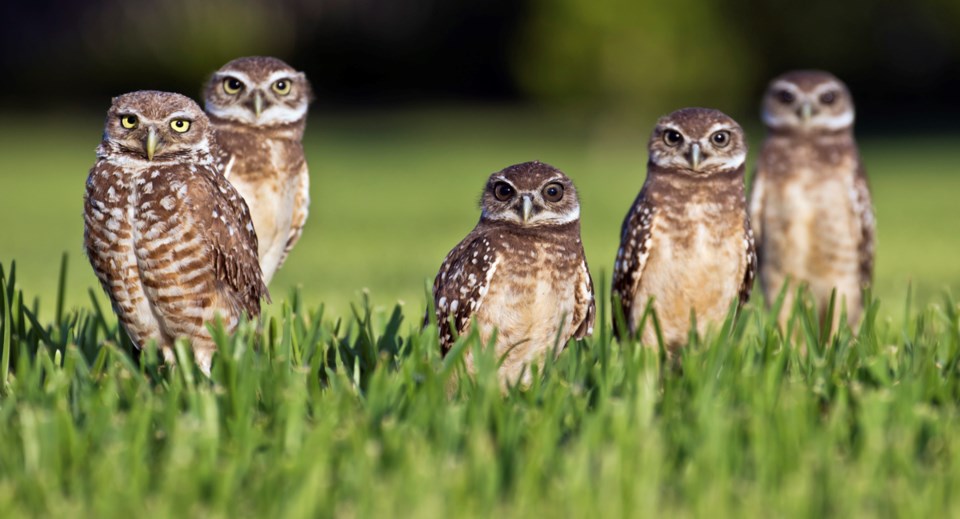The Burrowing Owls have returned to their Saskatchewan homes, after spending the winter in tropical Mexico and the southwestern United States.
After migration, these endangered owls are busy: starting the mating process, finding a home, and laying and incubating their eggs. Mid-May to Mid-June is the crucial period in which the Burrowing Owl accomplishes these tasks.
Burrowing Owls are identifiable by their small size and light and dark brown mottled plumage with white spots. They give off the appearance of walking on stilts, due to their long featherless legs. They have a round head, with large yellow eyes, and white ‘eyebrows’.
Unlike other owls, they are active during the day; especially in the spring when gathering food for their large broods. During the nesting season, male burrowing owls can often be seen on lookouts next to their burrows, or on nearby fence posts while the female incubates the eggs. Burrowing owls make a chuckling or chattering call. They also bob their heads to express excitement or distress.
Despite their name, Burrowing Owls do not dig a burrow themselves. They have to rely on the empty, abandoned burrows that have already been created by ground squirrels, badgers, and other burrowing mammals.
Once a suitable nest is found, the female lays six to 14 eggs each spring. These eggs are of critical importance to the survival and recovery of the species as there are thought to be less than 800 pairs nesting throughout Canada.
To ensure the nesting success of Burrowing Owls, it is important to minimize human activity around the nests as much as possible. However, the owls coexist with cattle very well. In fact, cattle are even beneficial to the Burrowing Owl. Kaytlyn Burrows, Habitat Stewardship Coordinator at Nature Saskatchewan, explains why: “On grazed pastures, the shorter grass gives Burrowing Owls the chance to sight possible predators more effectively. Additionally, the owls use cattle manure inside their nests to absorb excess moisture, regulate burrow temperature, attract insects for food, and hide their scent from predators.”
If you discover Burrowing Owls in your pasture, do not fear! There are many advantages to having these owls on your land, especially the free pest control. “Burrowing Owls eat huge numbers of insects, mice, voles, and grasshoppers,” says Burrows. “One nest of Burrowing Owls can consume over 1,000 rodents in a single season!”
Nature Saskatchewan’s Operation Burrowing Owl works with landowners to protect and enhance Burrowing Owl habitat, and monitors numbers at participating sites.
“Nature Saskatchewan is very fortunate to have so many passionate landowners participating in our programs and keeping a look-out for species at risk, including the Burrowing Owl,” says Burrows.
Operation Burrowing Owl records sightings to help determine the population trend and distribution throughout Saskatchewan. The information can then be used towards efforts to restore the population of these creatures. Any information given is never shared without the explicit landowner’s permission.
“Without the voluntary efforts of landowners, land managers, and the general public, recovery of this unique prairie owl would not be possible” says Burrows. She encourages the public to record any sighting of a Burrowing Owl by calling Nature Saskatchewan’s toll-free line.




